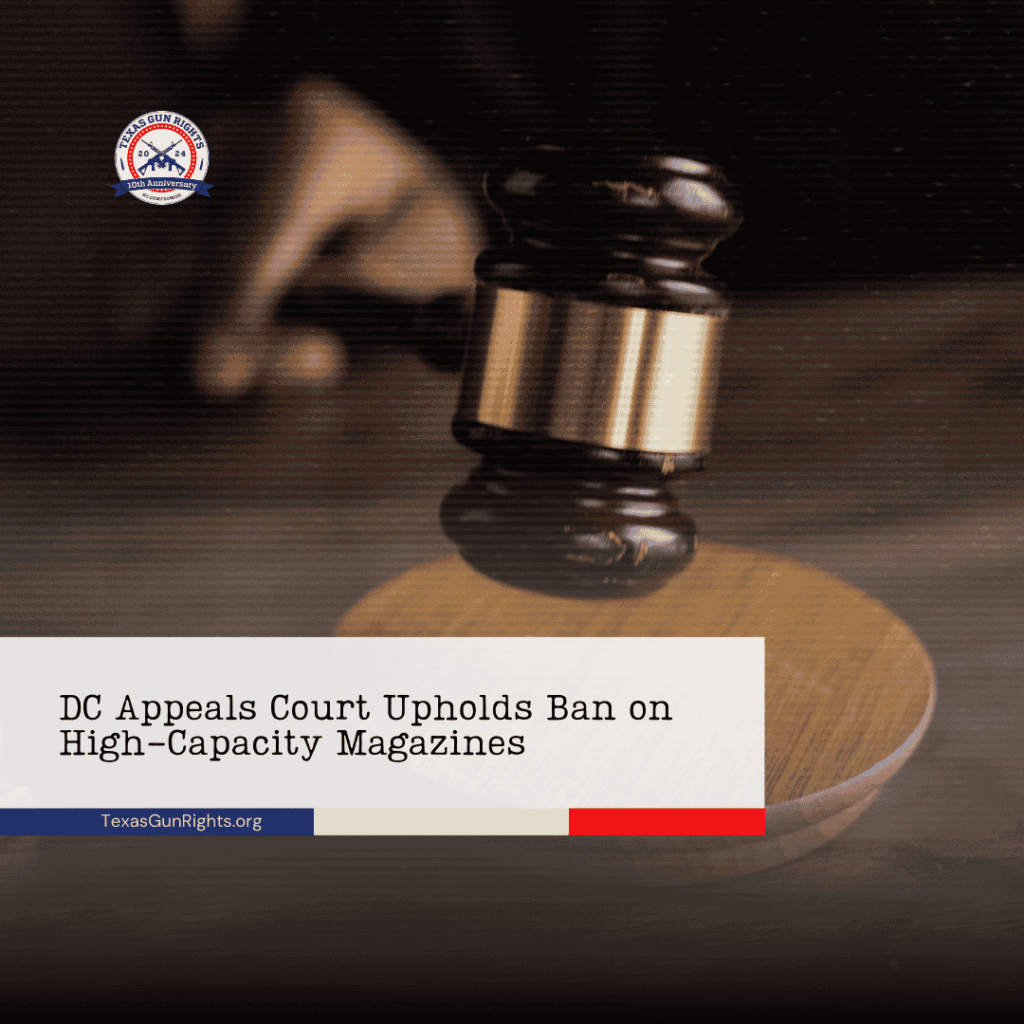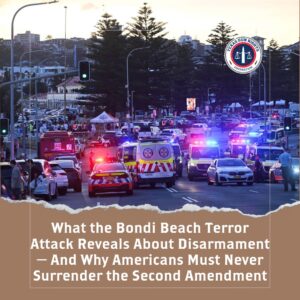Politically active gun owners have experienced many legislative victories and defeats over the past few decades. Some years yield solid victories, while others are laden with discouraging gun control measures.
Within the last few years, gun owners’ efforts were rewarded with the landmark decision in New York State Rifle & Pistol Association, Inc. v. Bruen. This Supreme Court decision significantly broadened the right to carry nationwide and resulted in several states passing Constitutional Carry. However, it would be naive to expect a future without losses or road bumps.
The enemies of freedom never rest, and there are still countless federal entities, state governments, and municipalities nationwide that do not respect the right to bear arms. Washington, DC is a prime example.
The United States Court of Appeals for The District of Columbia Circuit recently ruled that DC’s magazine ban is constitutional. The case in question, Hanson v. District of Columbia, sought to overturn the city’s prohibition on magazines holding more than ten rounds. The plaintiffs in this case wanted to own magazines capable of holding 17 rounds, which is the standard size for Glock 17s and other full-size handguns, as John Crump of AmmoLand News noted. The Circuit Court classified these magazines as extra-large capacity magazines (ELCM).
A District Court previously upheld the law, which prompted plaintiffs to appeal to a three-judge panel at the DC Circuit Court. The plaintiffs made the case that the District Court got the ruling wrong, pointing to the fact that the law was unconstitutional when Bruen and Heller standards were applied. The City of DC asserted that the law complied with the Second Amendment and the standards set in both cases.
In the Heller case, the Supreme Court ruled that bearable arms commonly used for lawful purposes cannot be prohibited. DC contended that magazines holding over ten rounds are rarely used in self-defense, thereby nullifying any common use protections. The plaintiffs argued that the simple fact that most defensive gun use cases require less than ten shots doesn’t mean those firearms were not fitted with magazines capable of holding over ten rounds.
The Bruen decision established the standard that gun law must be in line with the original context of the Second Amendment and the United States history and tradition of firearms regulations of the early days of the American Republic. Since the court determined that magazines holding over ten rounds were bearable arms safeguarded by the Second Amendment, the case must then be subjected to the second part of the Bruen test. At that point, the government must show historical cases that existed during the early days of the American Republic, demonstrating that current law is in line with the tradition and history of the Second Amendment.
DC attempted to use gunpowder storage laws to satisfy the court. The judges alluded to the Supreme Court’s Rahimi opinion to argue that a law doesn’t have to be historically identical but does have to be similar. Comparably, DC used the examples of prohibitions on Bowie knives during the late 1800s and a 20th century magazine capacity prohibition on Thompson submachine guns. Two judges agreed with those arguments; however, a third judge offered a scathing dissent against DC’s argument.
“The majority’s contrary conclusion depends on two types of regulations,” Judge Justin Walker declared in his opinion. “But neither of them is analogous. The first of them — a ‘handful’ of laws enacted nearly a century after the Second Amendment’s ratification in two outlier states and a territory — did not cover arms kept at home or carried while traveling; in addition, those laws are too little and too late to establish a historical tradition. As for the second purported analogue, it covered only ‘unusual’ arms — not arms in common use for lawful purposes. So neither demonstrates a tradition of laws imposing a burden comparable to DC’s complete ban on commonly possessed plus-ten magazines.
Thanks to the Appeals Court ruling, this magazine ban will stay in effect. The plaintiffs’ next move is anyone’s guess. The federal courts are ultimately a mixed bag, especially in Democrat jurisdictions. Obviously, litigation is a strategy that must be used to restore gun rights in the US. However, all forms of activism — electioneering, lobbying, litigation, media dissemination, etc. — must be used to oppose Gun Control, Inc.
Putting all our eggs in one basket makes it easier for our opponents to outmaneuver us. A multi-pronged strategy of advancing gun rights ensures that we can make progress on all fronts and keep enemy resources strained.







